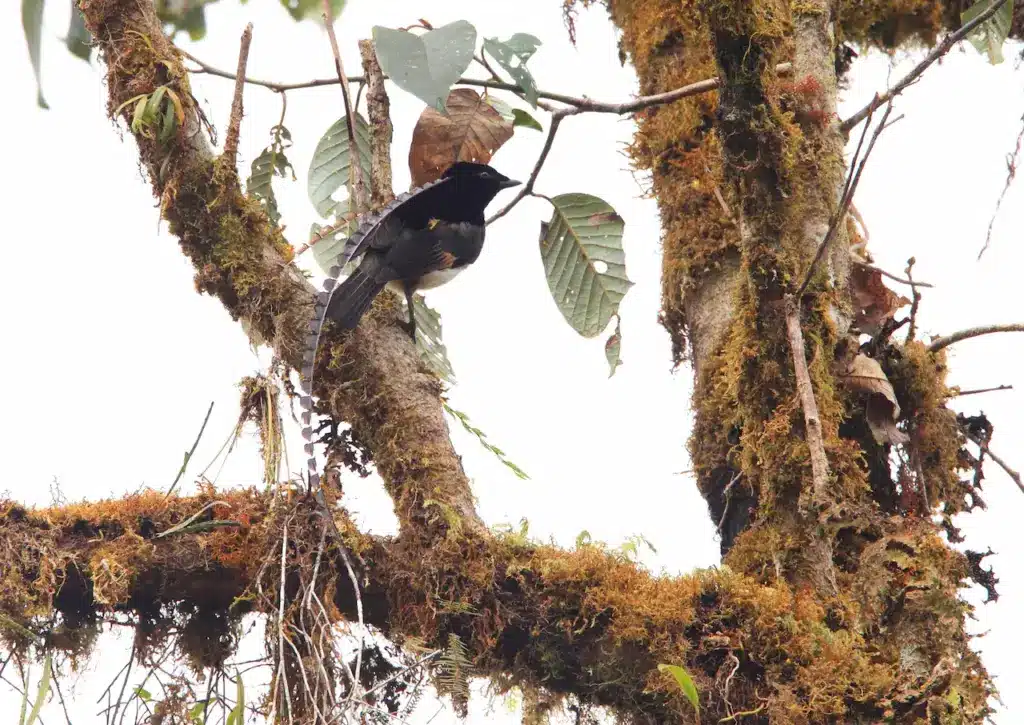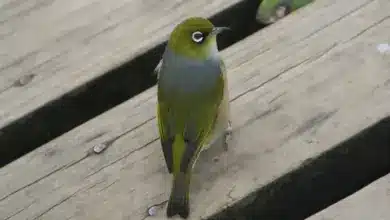The King of Saxony Birds of Paradise (Pteridophora alberti) is a bird in the Paradisaeidae or Birds of Paradise family. It is the only member in the monotypic genusPteridophora. It is endemic to montane forest in New Guinea.
Both the common name “King of Saxony” and the scientific specific name “alberti” were given to honour Albert of Saxony. The bird is sometimes known as “Kisaba” by the natives of Papua New Guinea and Western New Guinea, as a human interpretation of the male’s loud call.
The diet consists mainly of fruits, berries and arthropods.

Description
The adult King of Saxony Bird of Paradise is approximately 22 cm long. The male is black and yellow with a dark brown iris, black bill, brownish-grey legs, aqua-green mouth, with two remarkably long (up to 50 cm) scalloped, enamel-blue brow-plumes that can be erected at the bird’s will. The unadorned female is greyish brown with barred underparts.
The male’s ornamental head plumes are so bizarre that, when the first specimen was brought to Europe, it was thought to be a fake.
Distribution
The species is distributed from the Weyland Mountains in Western New Guinea to the Krathe Range in Papua New Guinea at 1,400–2,850 meters above sea level, but primarily at 1,800–2,500 meters above mean sea level (asl).
Although males are hunted for their highly prized long plumes, used by natives for ceremonial purposes, the species remains fairly common in parts of its range. It is considered to be of Least Concern on the IUCN Red List of threatened species. It is listed on Appendix II of CITES.
Behavior
Adult males are territorial. The male guards its territory from perches placed in the tops of tall trees, and from these perches sings to compete with males in neighbouring territories. Moulted head-plumes in good condition are sought by male Archbold’s Bowerbirds for use as decorations, and in turn collected from the courtship bowers by humans.
In 1996 David Attenborough filmed the first ever footage of the mating ritual of the bird.
References
- BirdLife International (2004). Pteridophora alberti. 2006. IUCN Red List of Threatened Species. IUCN 2006. Retrieved on 12 May 2006. Database entry includes justification for why this species is of least concern.
- Galley Press. The World Atlas of Birds.

